Síntesi d'àcids carboxílics d'alt valor afegit via hidrocarboxilació catalítica amb nous complexos de pal·ladi de baixa simetria. Deuteriocarboxilació com a eina d'obtenció d'informació mecanística
dc.contributor
Universitat Autònoma de Barcelona. Departament de Química
dc.contributor.author
Pagès Barenys, Montserrat
dc.date.accessioned
2011-04-12T14:12:39Z
dc.date.available
2001-10-04
dc.date.issued
2001-07-06
dc.date.submitted
2001-10-04
dc.identifier.isbn
8469980467
dc.identifier.uri
http://www.tdx.cat/TDX-1004101-153503
dc.identifier.uri
http://hdl.handle.net/10803/3117
dc.description.abstract
En aquest treball s'ha demostrat que, mitjançant la reacció d'addició oxidativa sobre el tetrakistrifenilfosfina pal·ladi(0), s'obtenen clorocomplexos tiolat amb els clorohidrats cisteamina, ester etílic de la L-cisteïna i ester metílic de la D-penicilamina, i una trifenilfosfina que resta del producte de partida. Si el producte de partida és el Pd(dba)2 i se li addiciona 1 equivalent de PMePh2, s'obté el clorocomplex tiolat amb el lligand ester etílic de la L-cisteïna i una metildifenilfosfina.<br/>Aquests nous complexos aïllats són mononuclears i de baixa simetria. En algun cas presenten només el pla de simetria que conté la molècula i, en altres, aquest pla és destruït per la presència d'un lligand més ramificat, produint complexos asimètrics C1. Les estructures de 1-6 han quedat establertes per IR i RMN (1H, 13C i 31P{1H}), i en el cas de 1 i 2 s'ha determinat l'estructura cristal·lina del sòlid per mètodes de difracció de raigs-X on es confirma una geometria planoquadrada on els lligands aniònics es situen en trans.<br/>Els assajos catalítics d'hidrocarboxilació realitzats demostren que els sistemes catalítics, desenvolupats en aquest treball, A i B són actius i molt selectius per a l'obtenció d'àcids 2-arilpropiònics (2-fenilpropiònic, 2-(4-tert-butilfenil)propiònic, 2-naftalen-2-il-propiònic) i l'àcid acenaftè-1-carboxílic, mentre que es mostren ineficaços en la hidrocarboxilació del trans-anetol i el trans-1,2-dimetoxi-4-(1-propenil)benzè. Per altra banda, els sistemes catalítics C, D i D' esdevenen molt actius i extremadament selectius per a l'obtenció dels àcids 2-(4-metoxifenil)butíric i 2-(3,4-dimetoxifenil)butíric. En aquesta avaluació s'ha pogut veure que quan s'utilitzen els complexos 1 i 2, sintetitzats i caracteritzats en aquest treball, com a precursors catalítics disminueix l'activitat però augmenta considerablement el valor de la regioselectivitat vers l'isòmer ramificat. No obstant, tot i que el complex 2 és un precursor quiral, no s'ha observat enantioselectivitat en els productes obtinguts. Així, s'ha postulat que el lligand cisteínic, a les condicions de reacció, actua de manera monodentada a través de l'àtom de sofre quedant, així, el centre asimètric massa lluny del nucli metàl·lic.<br/>Mitjançant experiments de deuteriocarboxilació s'han pogut obtenir algunes conclusions mecanístiques d'aquesta reacció. Així, s'ha proposat que, en els sistemes catalítics emprats i donats els resultats obtinguts, sembla ser que la reacció catalítica transcorre a través d'un mecanisme on es forma un intermedi hidrídic. Així mateix, s'ha arribat a la conclusió que la inserció del grup carboxilat i l'hidrogen del carboni b es produeix en cis i s'ha avaluat en cada cas la importància del procés col·lateral d'eliminació-b. A més a més, s'ha identificat, aparentment per primer vegada, un procés d'inversió sobre l'intermedi alquílic, via atac nucleofílic per Pd(0).
cat
dc.description.abstract
In this work we have shown that, mediating the oxidative addition reaction of tetrakistriphenylphosphine paladium(0), it is possible to obtain chlorothiolcomplexes using the hydrochlorides cysteamine, L-cysteine ethyl ester and D-pencillamine methyl ester, and one triphenylphosphine which proceeds from the tetrakistriphenylphosphine paladium(0). If the reactant used is Pd(dba)2 and we added 1 equivalent of PMePh2, we obtain the chlorothiolcomplexe with one molecule of L-cysteine ethyl ester and one molecule of methyldiphenylphosphine as ligands.<br/>These new isolated complexes are mononuclear and have low symmetry. Some of them only have a symmetry plain that contains the molecule and, in other cases, this plain is broken by a more bulky ligand that produces asymmetric complexes C1. The structures 1-6 have been characterised by IR and NMR (1H, 13C and 31P{1H}). In addition, in the case of 1 and 2 it has been possible to obtain their crystalline structure by X-ray diffraction methods where we have confirmed their squareplane structure and the position trans of anionic ligands.<br/>The hydrocarboxylation catalytic experiments we have done shown that the catalytic systems, which we have developed in this work, A and B are actives and gives a very good regioselectivity in the synthesis of 2-arilpropionic acids (2-phenylpropionic, 2-(4-tert-butylphenyl)propionic, 2-naphtalen-2-il-propionic) and acenaphthene-1-carboxylic acid, otherwise they are inactives in the hydrocarboxylació of trans-anethol and trans-1,2-dimetoxy-4-(1-propenyl)benzene. On the other hand, the catalytic systems C, D and D' have a high activity and are extremely selectives in the synthesis of the acids 2-(4-metoxyphenyl)butyric and 2-(3,4-dimetoxyphenyl)butyric. In this evaluation it has been possible to observe that the use of complexes 1 and 2 as catalytic precursors decreases activity but produces a great increase in the production of the branched acid. However, there is no enantioselectivity in this process although complex 2 is a quiral precursor. In this way, we thought that the cysteinic ligand, in the reaction conditions, acts in a monocoordinated manner trough the thiol group, which produces that the asymmetric centre was so far away from the metallic nucleus.<br/>Through deuteriocarboxylation experiments it has been possible to obtain some mechanistic conclusions about this reaction. We thought that, from the obtained results and with the used catalytic systems, the catalytic reaction goes through an hydride mechanism. In addition, the results show that the insertion of the carboxylate group and the hydrogen atom in the carbon b happens in cis and we have evaluated in each case how important is the collateral elimination-b. process. Moreover, we have observed, apparently for the first time, an inversion process on the alquilic intermediate through a nucleofilic atac by Pd(0).
eng
dc.format.mimetype
application/pdf
dc.language.iso
cat
dc.publisher
Universitat Autònoma de Barcelona
dc.rights.license
ADVERTIMENT. L'accés als continguts d'aquesta tesi doctoral i la seva utilització ha de respectar els drets de la persona autora. Pot ser utilitzada per a consulta o estudi personal, així com en activitats o materials d'investigació i docència en els termes establerts a l'art. 32 del Text Refós de la Llei de Propietat Intel·lectual (RDL 1/1996). Per altres utilitzacions es requereix l'autorització prèvia i expressa de la persona autora. En qualsevol cas, en la utilització dels seus continguts caldrà indicar de forma clara el nom i cognoms de la persona autora i el títol de la tesi doctoral. No s'autoritza la seva reproducció o altres formes d'explotació efectuades amb finalitats de lucre ni la seva comunicació pública des d'un lloc aliè al servei TDX. Tampoc s'autoritza la presentació del seu contingut en una finestra o marc aliè a TDX (framing). Aquesta reserva de drets afecta tant als continguts de la tesi com als seus resums i índexs.
dc.source
TDX (Tesis Doctorals en Xarxa)
dc.subject
Deuteració
dc.subject
Hidrocarboxilació
dc.subject
Pal.ladi
dc.subject.other
Ciències Experimentals
dc.title
Síntesi d'àcids carboxílics d'alt valor afegit via hidrocarboxilació catalítica amb nous complexos de pal·ladi de baixa simetria. Deuteriocarboxilació com a eina d'obtenció d'informació mecanística
dc.type
info:eu-repo/semantics/doctoralThesis
dc.type
info:eu-repo/semantics/publishedVersion
dc.subject.udc
543
cat
dc.contributor.director
Real Obradors, Juli
dc.rights.accessLevel
info:eu-repo/semantics/openAccess
dc.identifier.dl
B-17135-2002
Este ítem aparece en la(s) siguiente(s) colección(ones)
Departament de Química [494]


